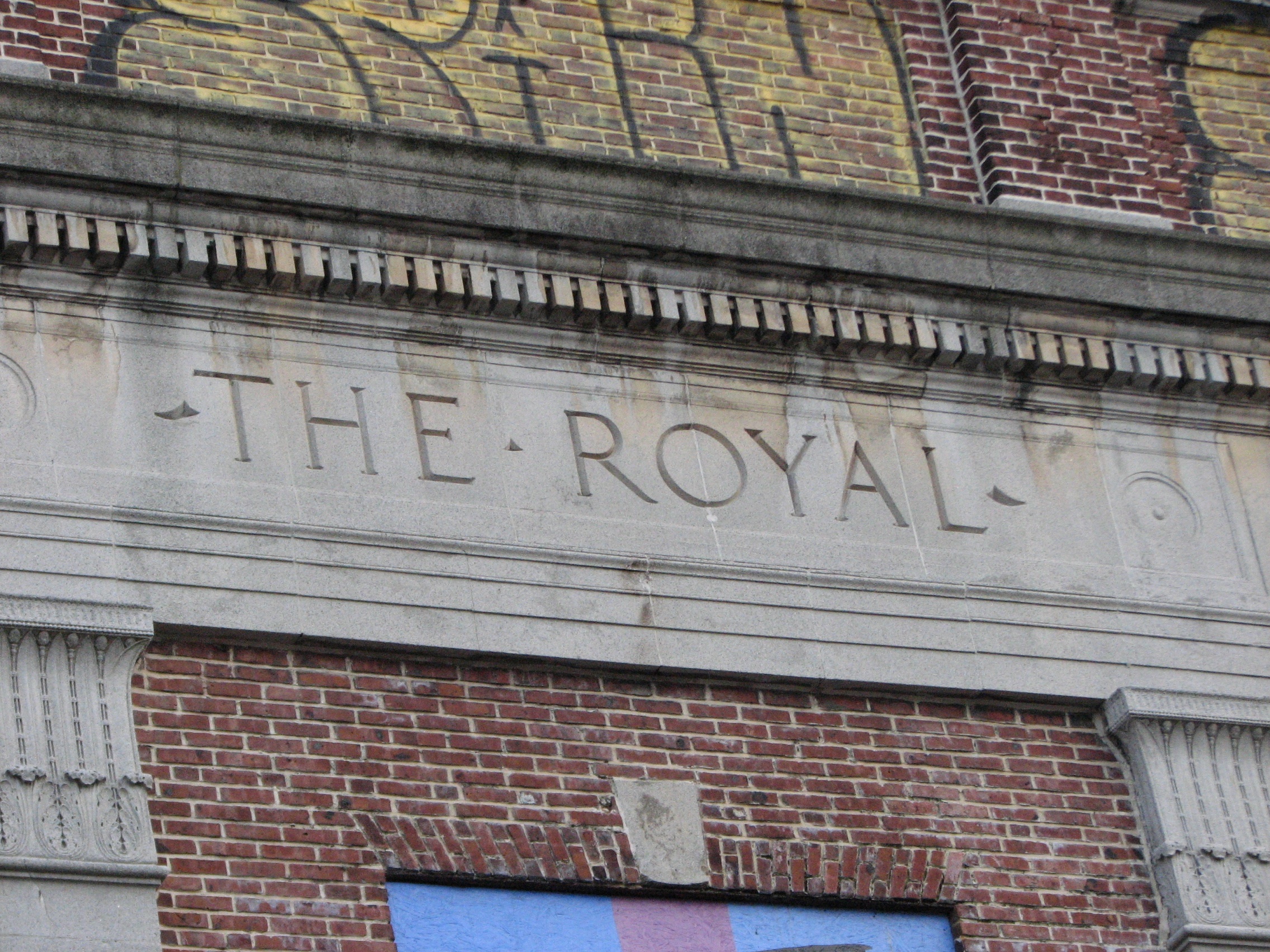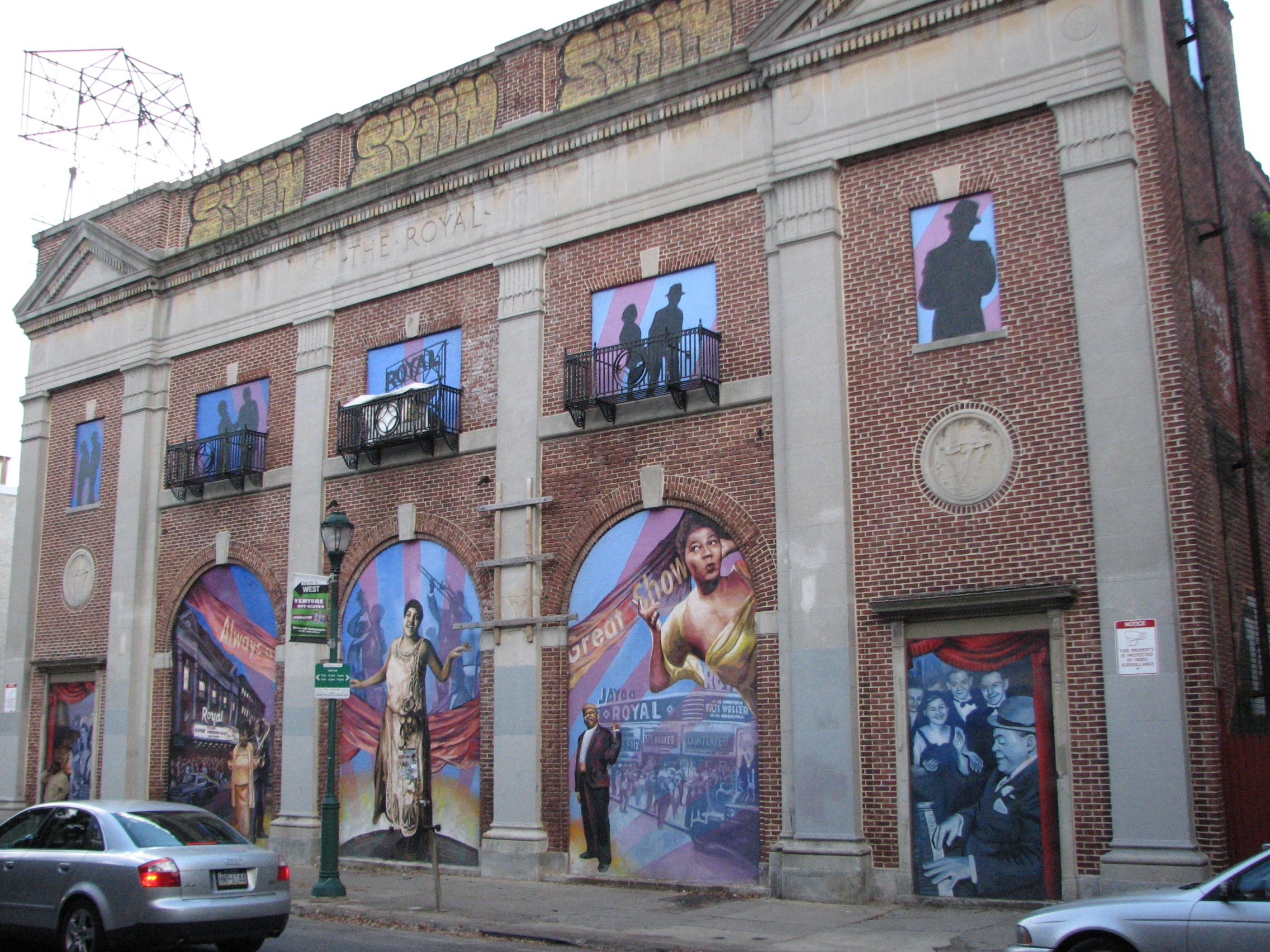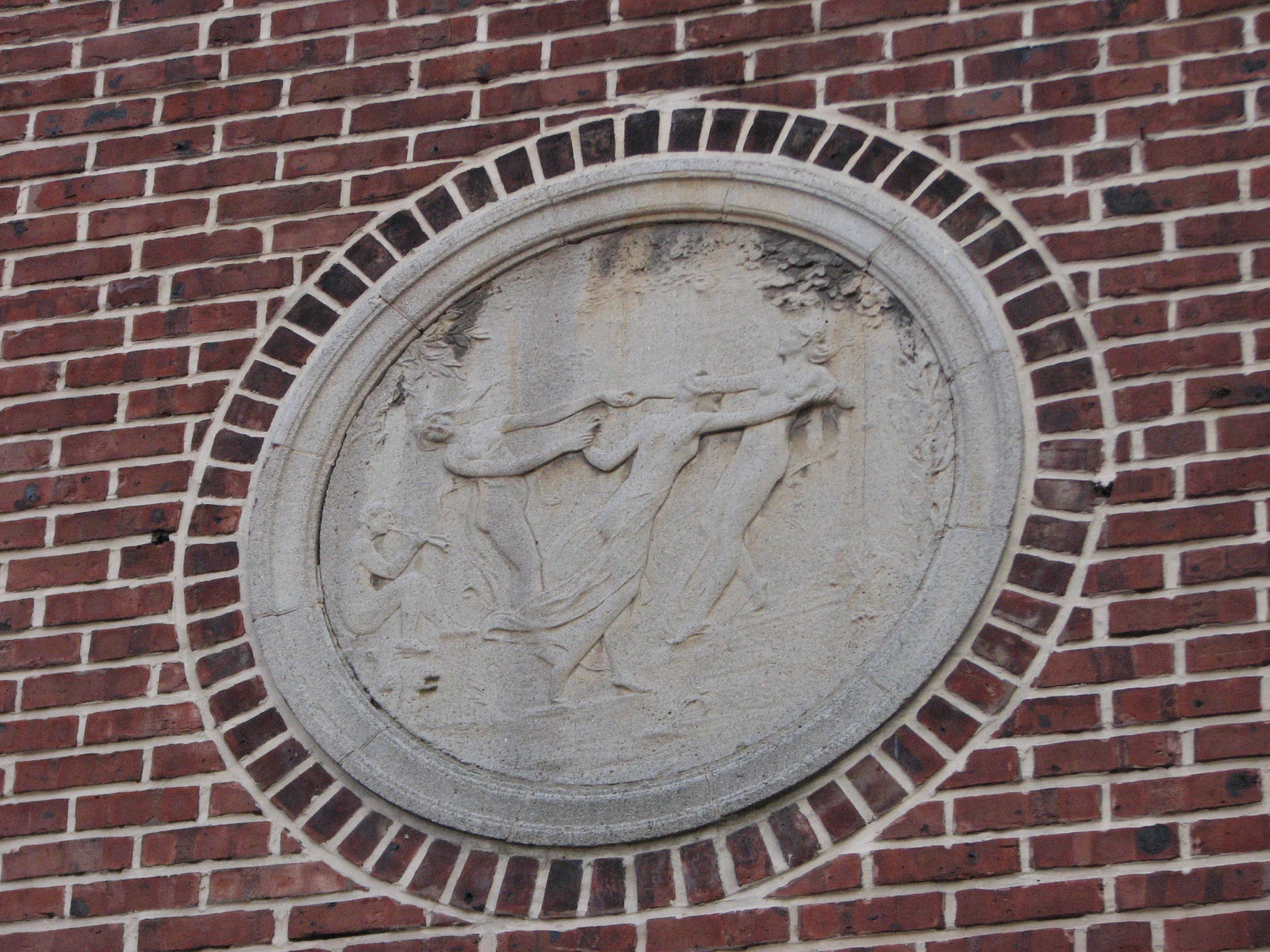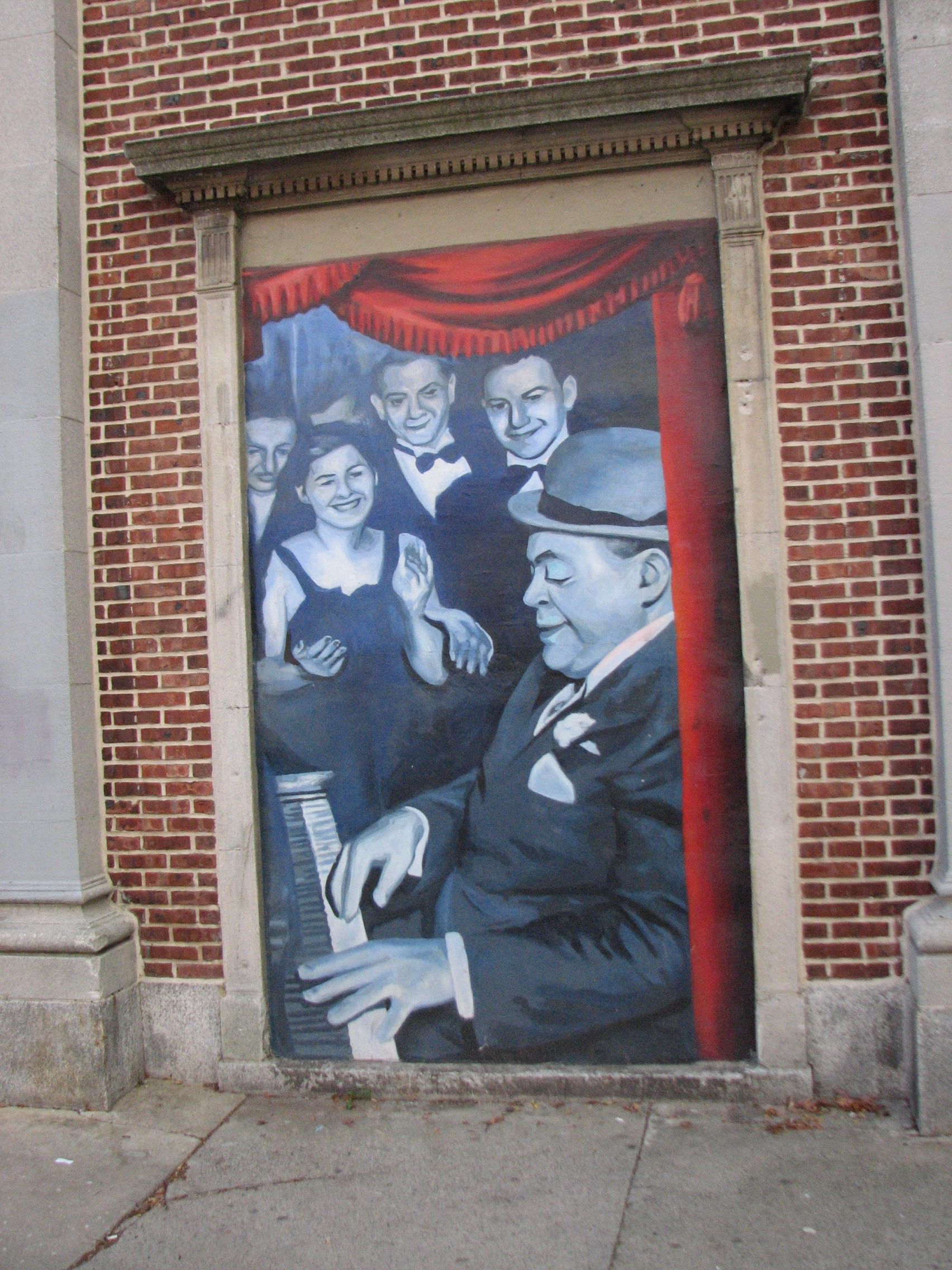Preservation Row: Whither the Royal Theater?
It’s not just the spirits of Fats Waller and Bessie Smith that linger around the Royal Theater. Their images live large on the façade of the long-vacant music and movie house.
But not much else has lived on the site at 1522 South Street for the past 40 years.
Proposals for a revived theater, entertainment venue, exhibition space, or, most recently, a retail and residential development have been promised, forgotten or rejected. The economic climate and lack of consensus on what should happen on the block keep the Royal frozen in time.
No one wants to talk too much about it. But everyone agrees that there is a feasible, profitable future for the site and the neighborhood.
An African-American landmark
The neo-Georgian theater was built by Philadelphia architect Frank E. Hahn in 1919-20. Hahn had previously engineered the reinforced concrete frames for the construction of the Blenheim and Traymore Hotels in Atlantic City. In Philadelphia, working with Paul Cret in 1923, he combined classical style and contemporary technology for the YMHA at Broad and Pine Sts. Hahn also designed the Warwick Hotel in 1925 and the Yiddish Theater that once stood on 5th Street near Locust.
Hahn built the 1,100-seat Royal for South Street developer Abraham Wax, whose goal was a theater serving the neglected black community. For the interior, Wax called in renowned Art Deco theater designer William H. Lee for alterations in 1925.
Wax was the city’s first theater operator to hire an all-black staff, which grew into the Colored Motion Picture Operators Union. The Royal, touted as “America’s Firtst Colored Photoplay House,” screened first-run films featuring major black stars, including Paul Robeson, in its early years, and double features in the 1950s. A talent show for children, the Parisian Tailor Kiddie Houwe broadcast by WPEN, was held on Sundays.
The theater also invited leading performers of the period to its stage. Waller, Smith, Cab Calloway, Pearl Bailey and Billie Holiday appeared at the Royal, making it a “major landmark in American entertainment,” according to the Philadelphia Historical Commission’s statement when it was designated in 1978.
Decades of failed projects
Dwindling audiences and plans for a Crosstown Expressway led to the theater’s closure in 1970. Michael Singer Real Estate purchased the property at a sheriff’s sale in 1973. A variety of proposals to revive and reopen the Royal as a performing arts venue were met with optimism, but never enough funding and energy to make them happen.
The building suffered over the decades from a leaky roof and poor drainage system, invasive plants, crumbling brick walls and parapets, deteriorating cornices and windows, fire damage and vandalism.
The Preservation Alliance for Greater Philadelphia bought the property in 1998 for $350,000, with the intention of serving as a temporary steward until a new owner could be found. The Alliance also obtained an easement to protect the façade of the Royal, which added a layer of protection to that portion of the already historically designated building and made it eligible for government tax credits.
In 2000, a new owner came along. Philadelphia music legend and community developer Kenny Gamble, recalling the Saturday matinees he watched at the Royal as a child, bought the theater and several surrounding buildings for $300,000. “It’s going to be an entertainment facility that will have the best live music you can find,” Gamble told The Philadelphia Inquirer at the time of the sale.
A $250,000 federal grant to Gamble’s Universal Companies was used to stabilize the building, and nearly 12 years later the building looks well-maintained and ready for its close-up. But it remains shuttered, covered in murals of the great performers who once appeared there. Plans to revive the Royal as an entertainment venue appear dim, a result of the economic downturn and other market changes.
Asked about the current plans for the site, Rahim Islam, president and CEO of Universal Companies, offered a prepared statement:
“We remain eager to redevelop the Royal Theater site and have met with members of the community on numerous occasions to explain the obstacles to moving forward. Universal has a long history of successfully developing properties in South Philadelphia and elsewhere and we plan to maintain that track record. Unfortunately, none of the plans we have considered for the Royal has proven economically feasible to date and the depressed condition of the real estate and financial markets over the past three years have exacerbated that situation.
“We are facing the same challenges that confront many theaters across the nation, including the historic Uptown Theater on North Broad Street. Those theaters have suffered fates similar or in many cases worse than the Royal. Unlike many of the others, our efforts to preserve the building have kept the property viable. We are also mindful of the building’s aesthetics, which is why we added beautiful murals on the front of the building.
“Two things are for certain about this project: we will continue to seek community buy-in for any plans just as we do with all of our projects; and the historic faÁade of the theater will be maintained in any plan. We are a part of this community and we appreciate the support we have received from almost everyone who, like us, has a desire to see a project completed. The property had sat idle for more than 20 years before we purchased it. We immediately shored it up and have maintained it at great cost for the past 10 years.
“Even in the best of times the capital outlay for a redevelopment project of this nature would take creative financial work, but right now the markets simply can’t justify the investment required. We look forward to those conditions changing so that we are in a position to announce plans and proceed with the project.”
Mixed-use compromise?
The South Street West Business Association, which has emphasized the need to preserve the commercial zoning of the block, has met with Universal over the last year to discuss the latest plans, which reportedly include housing, retail and parking. Marcus Iannozzi, SSWBA secretary, issued a statement for the organization, saying: “SSWBA is very eager for Universal to find a viable project for the site, but they haven been unable to identify one to date.” The association will elect a new slate of board members this month and plans to draft its own proposal for the site, according to Iannozzi.
John Gallery, who became president of the Preservation Alliance after its sale of the Royal, said plans to reopen the theater for live entertainment would be difficult. The seating is gone and there is no backstage, just a stage and the shell of a building.
“The Alliance originally purchased it with the hope that some sort of an entertainment use could be done – something like the TLA on South Street, but presumably something that was more connected with the African-American cultural and historical context on that part of South Street,” Gallery said. The facility could not accommodate a Broadway production, but it could house an exhibit space that focused on music associated with the history of the Royal. “That would be an appropriate use,” Gallery said.
If the redevelopment of the site maintained the protected faÁade and found a community use for a portion of the building, the business and civic groups might support the plan, he continued.
“Maybe you could have small, informal musical events there, or some musical education programs for kids in the neighborhood,” Gallery said. “Renovating the whole building for an entertainment use might not be feasible, and some other compromises might be OK.”
Previous Preservation Row stories:
Emanuel Evangelical Lutheran Church
Contact the writer at ajaffe@planphilly.com.
WHYY is your source for fact-based, in-depth journalism and information. As a nonprofit organization, we rely on financial support from readers like you. Please give today.







